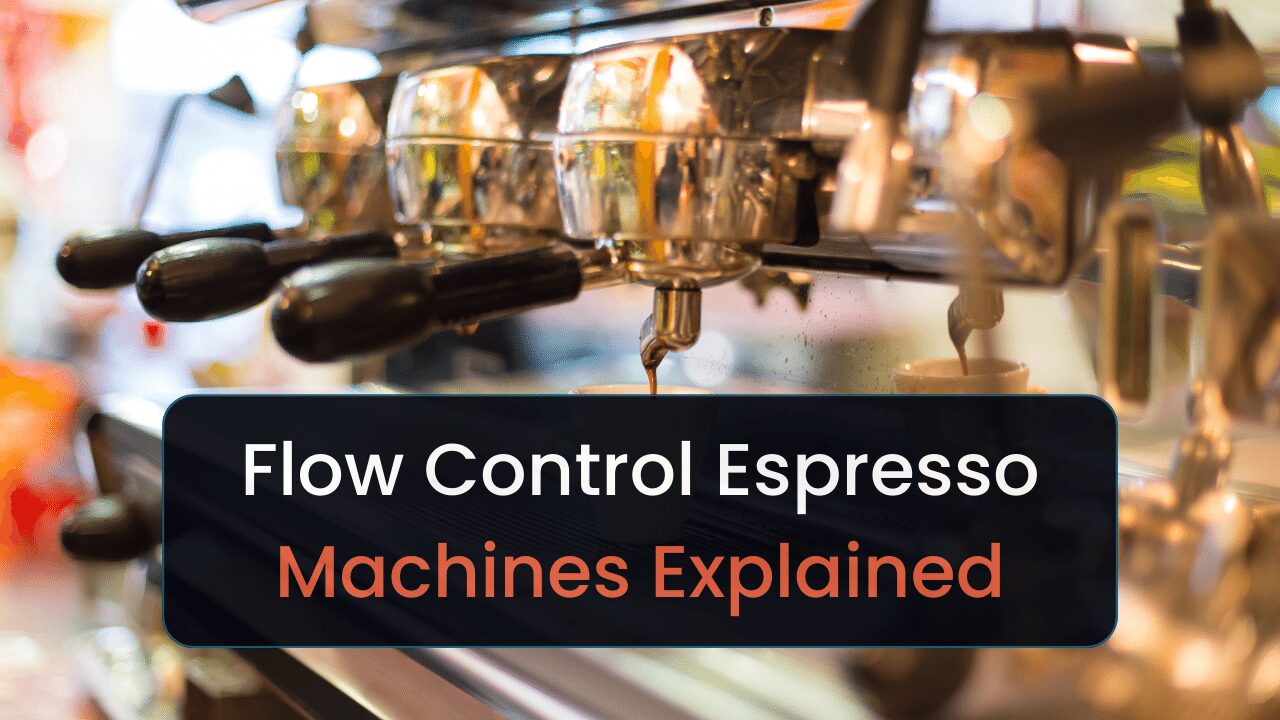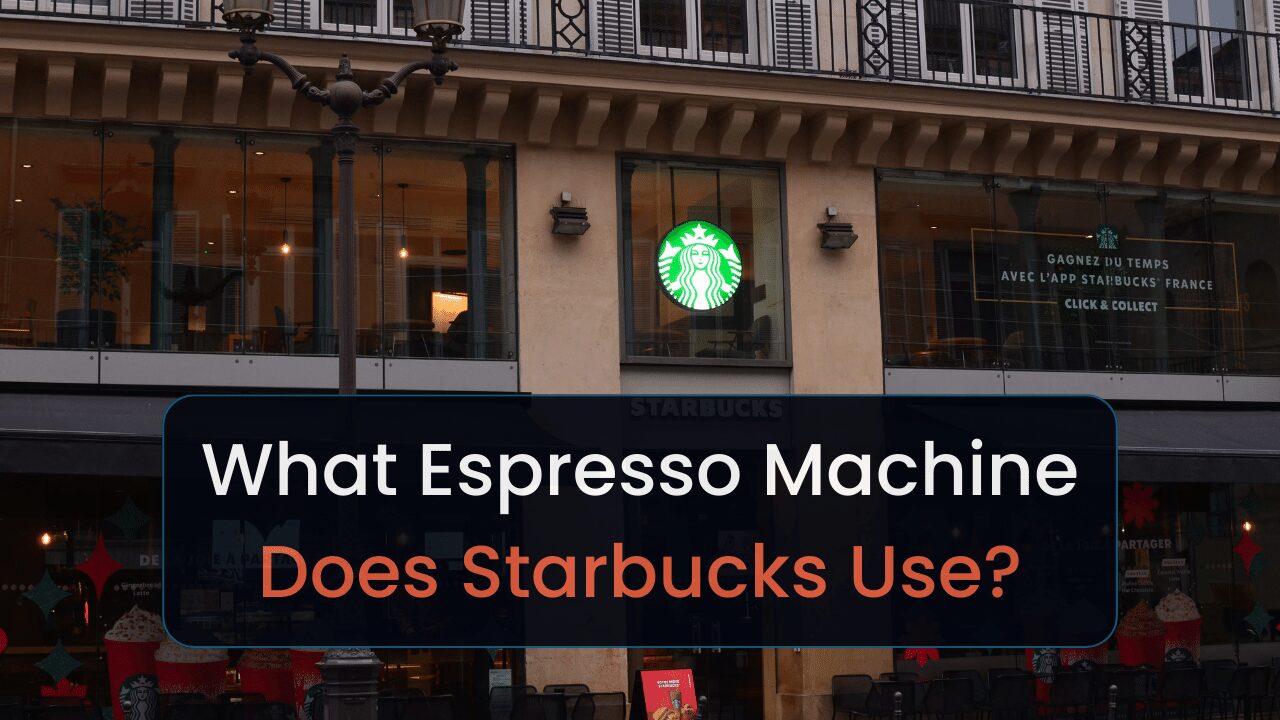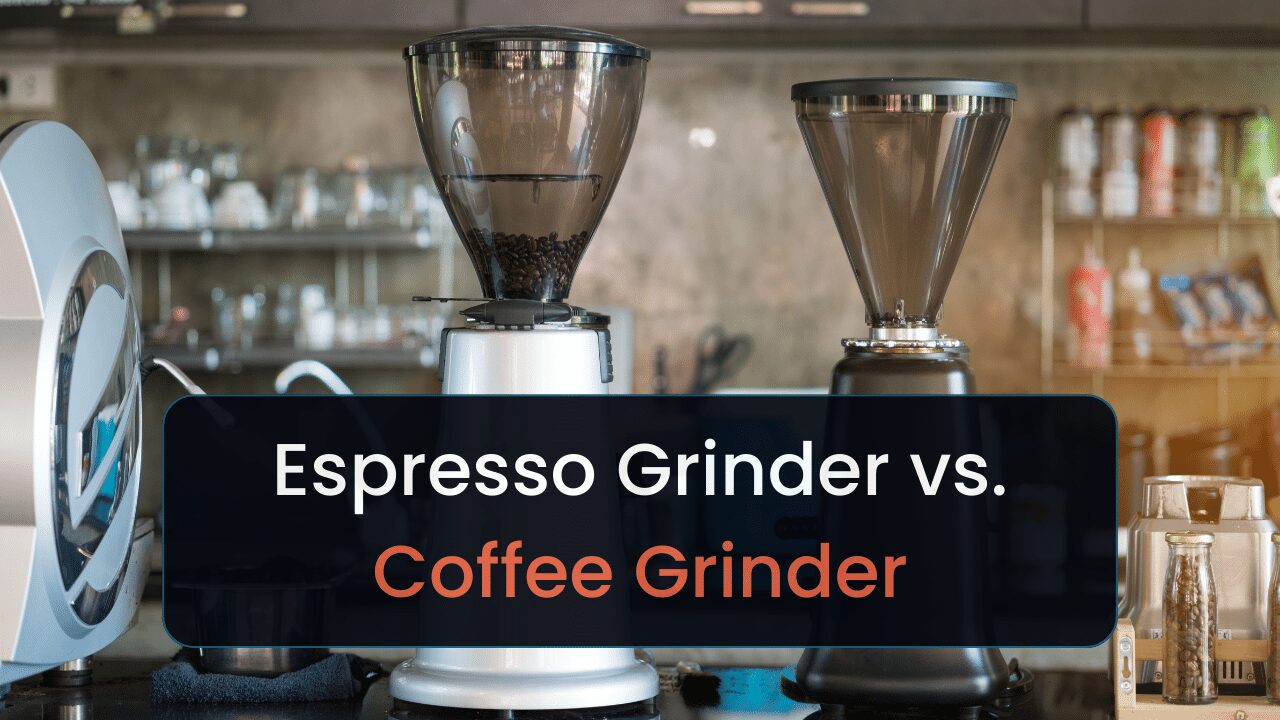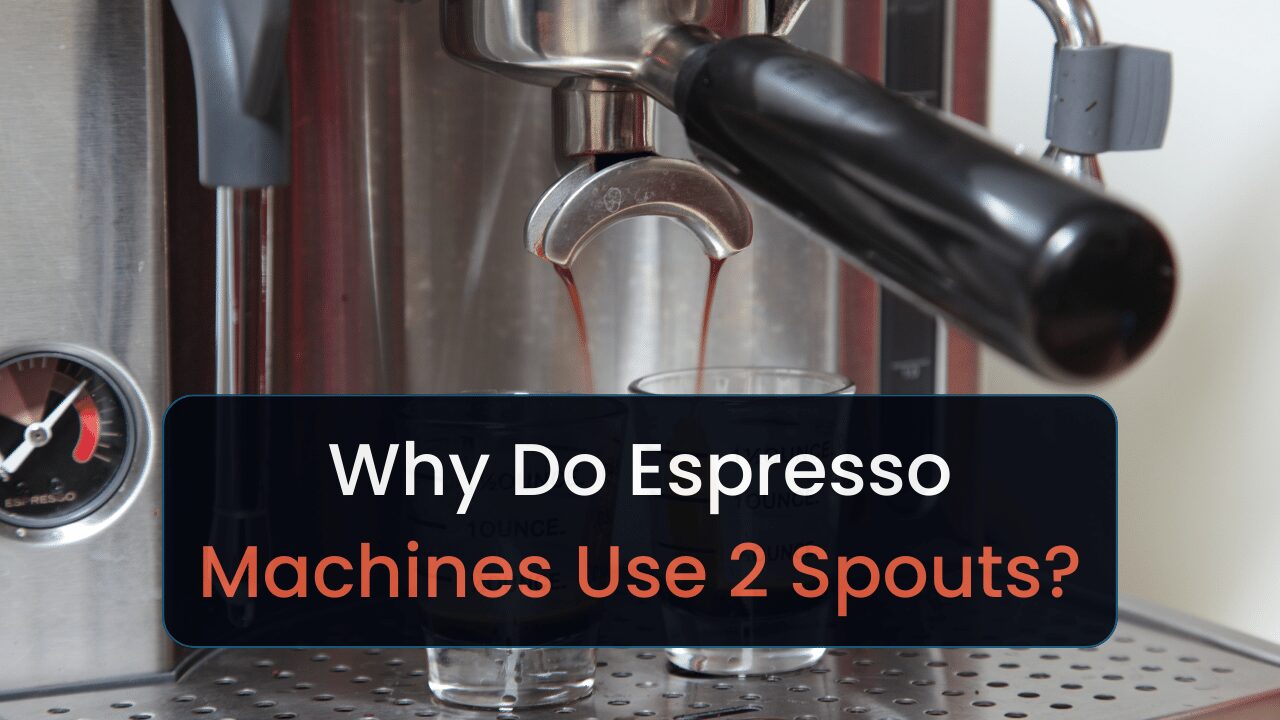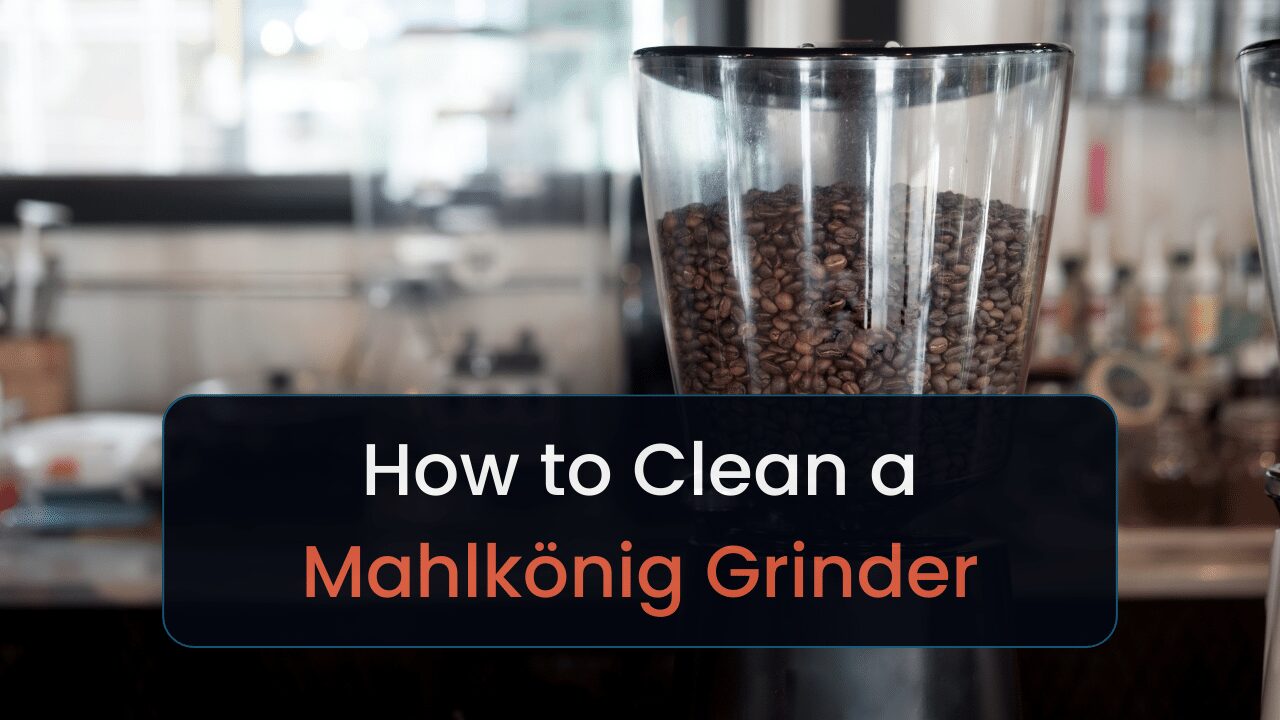This piece will compare grinders that the brands CEADO and Mahlkönig offer. Read on to learn more.
I’ve been looking for a coffee grinder to use for a coffee shop idea I’ve had, which led me to compare grinders from CEADO and Mahlkönig. I’ll explain my findings in this guide.
I’ll compare popular home, prosumer, and commercial grinders from both brands. You’ll find their specifications, who they’re best for, special features, and whether each is better for your purpose.
Here is an overview:
Let’s dive in.
Key Takeaways
- CEADO grinders typically cost less than Mahlkönig ones.
- Mahlkönig usually uses thicker, higher-quality burrs.
- Mahlkönig doesn’t have the biggest selection of home grinders.
- Mahlkönig offers industrial coffee grinders, CEADO doesn’t.
Home/Prosumer Mahlkönig vs. CEADO Grinders
The following sections will compare the following coffee grinders for home use:
- CEADO E5SD: Single dose and uses the best burrs
- Mahlkönig K30: Robust burrs at a decent price
- CEADO E6P: Most affordable
- Mahlkönig GH1: Best for multiple brewing methods
I’ll first cover specifications for each machine. Afterward, I’ll explain who each is best for, significant features or design choices that stand out, and whether each machine is better.
Here we go.
1. Mahlkönig K30 vs. CEADO E5SD
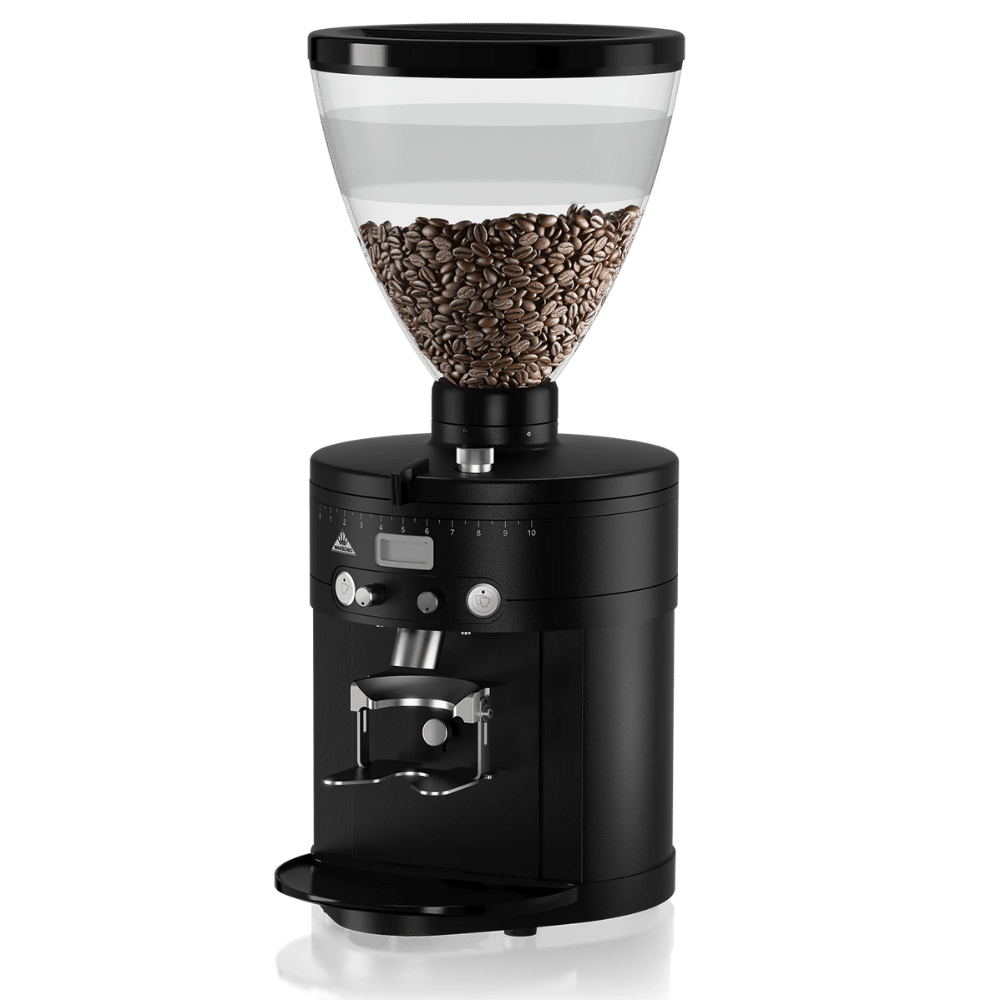
Mahlkönig K30
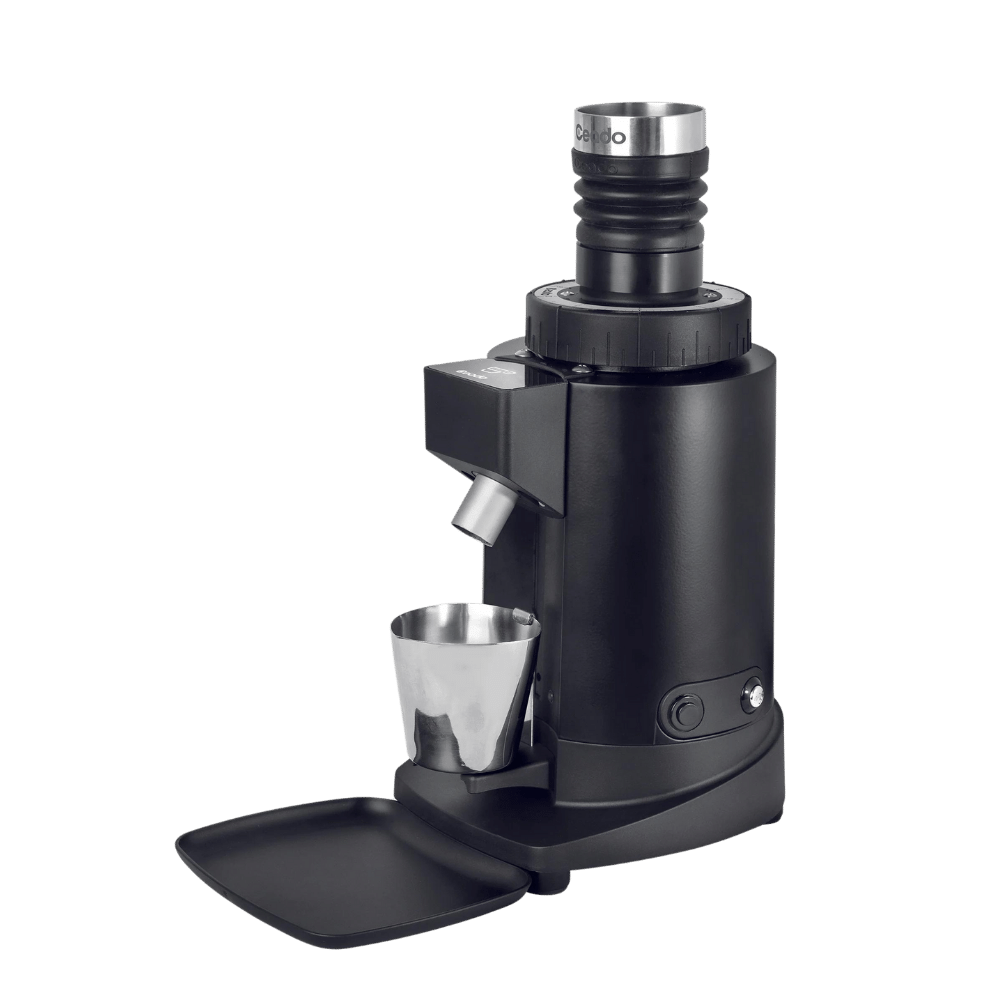
CEADO E5SD
| K30 | E5SD | |
| Price | $1,750 | $1,230 |
| Burr Shape | Flat | Flat |
| Material (Burr) | Special Steel | Opalglide |
| Diameter (Burr) | 65 mm | 64 mm |
| Hopper Capacity | 3.3 lbs | Single Dose |
| Watts | 850 W | 300 W |
| RPM for Burrs | 1350 RPM (50 Hz) 1650 RPM (60 Hz) | 1380 RPM (50 Hz) 1650 RPM (60 Hz) |
| Net Weight | 28 lbs | 18.7 lbs |
| Dimensions (D × W × H) | 12 × 9.4 × 21 in | 7 × 8.3 × 14 in |
The CEADO E5SD works better for grinding espresso at home for a single person. The K30 works better for multiple brewing methods and grinding for more than 1 drink.
The Mahlkönig K30 is a discontinued model, but this section is still helpful to read if you find this device second-hand.
The E5SD uses a single-dose bean holder instead of a hopper. This bean storage type ensures you use the freshest beans possible since you won’t find leftovers from previous grinds in your doser.
You also have more precise dosing with each cup, making it better for espresso nerds who want the best taste possible. It would also work for other brewing methods (e.g., filter coffee) due to using fewer revolutions per minute (RPM).
But the K30 has less RPM. And the slower the machine, the less fine the grounds. However, both grinders will do “fine” when grinding for espresso due to having a high RPM.
The burr materials are what make both grinders so pricey for “home” grinders. Opalglide is a trademark of CEADO and is not used on any other brand. But that gives them a reason to charge more for their machine. Since it’s supposedly revolutionary technology.
To my surprise, it isn’t a useless feature designed for marketing hype [1].
Here’s a comparison of special steel and opalglide burrs:
- Opalglide: Best for single-dosing and prioritizing flavor preservation, grind consistency, and speed.
- Special Steel: A good all-rounder for wider availability, durability, and decent grind quality.
The special steel burrs are more likely to heat up and strip flavor from your beans. The opalglide burrs minimize friction, which improves your beans’ flavor.
Which One’s Better?
The CEADO E5SD is a superior option because the single dosing results in fresher tasting coffee and less grind retention. The opalglide burrs are super durable like special steel ones, but don’t heat up as much, which would damage your coffee beans.
CEADO’s grinder is also not discontinued and more affordable. Making it more accessible to home users.
2. Mahlkönig GH1 vs. CEADO E6P
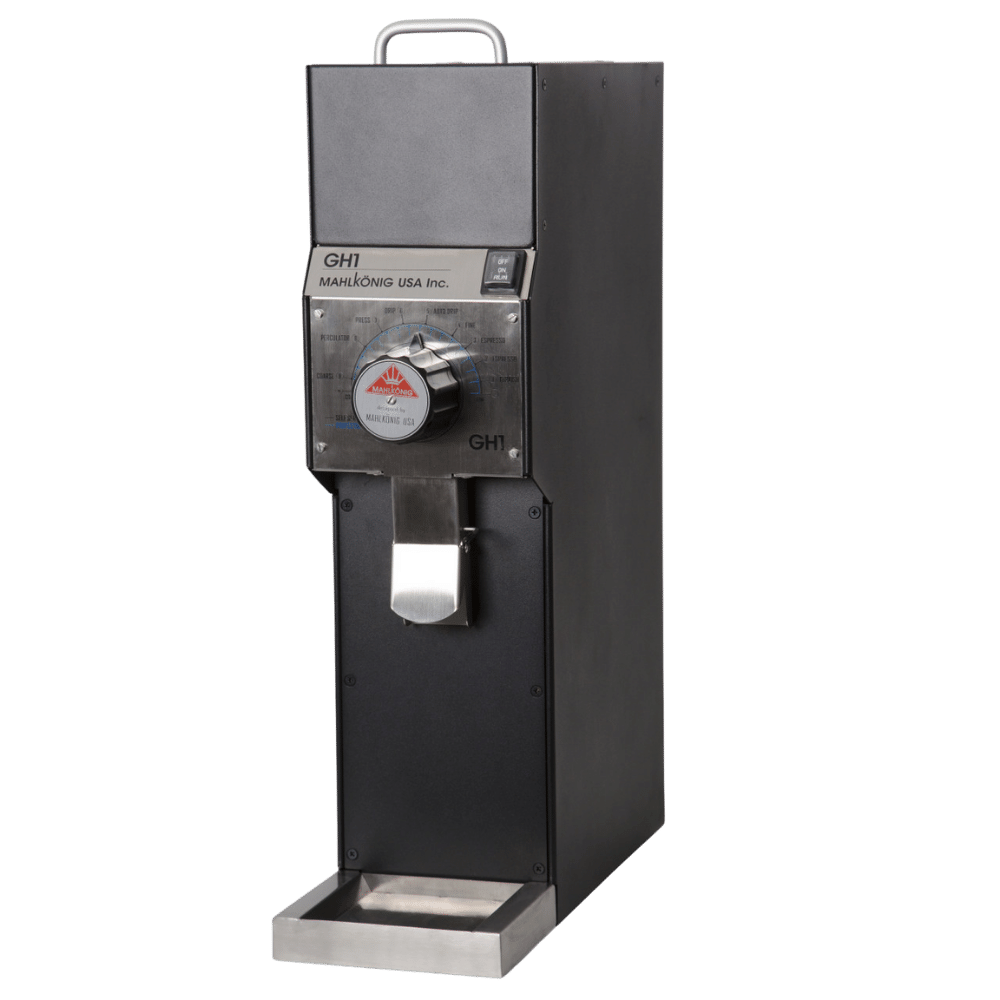
Mahlkönig GH1
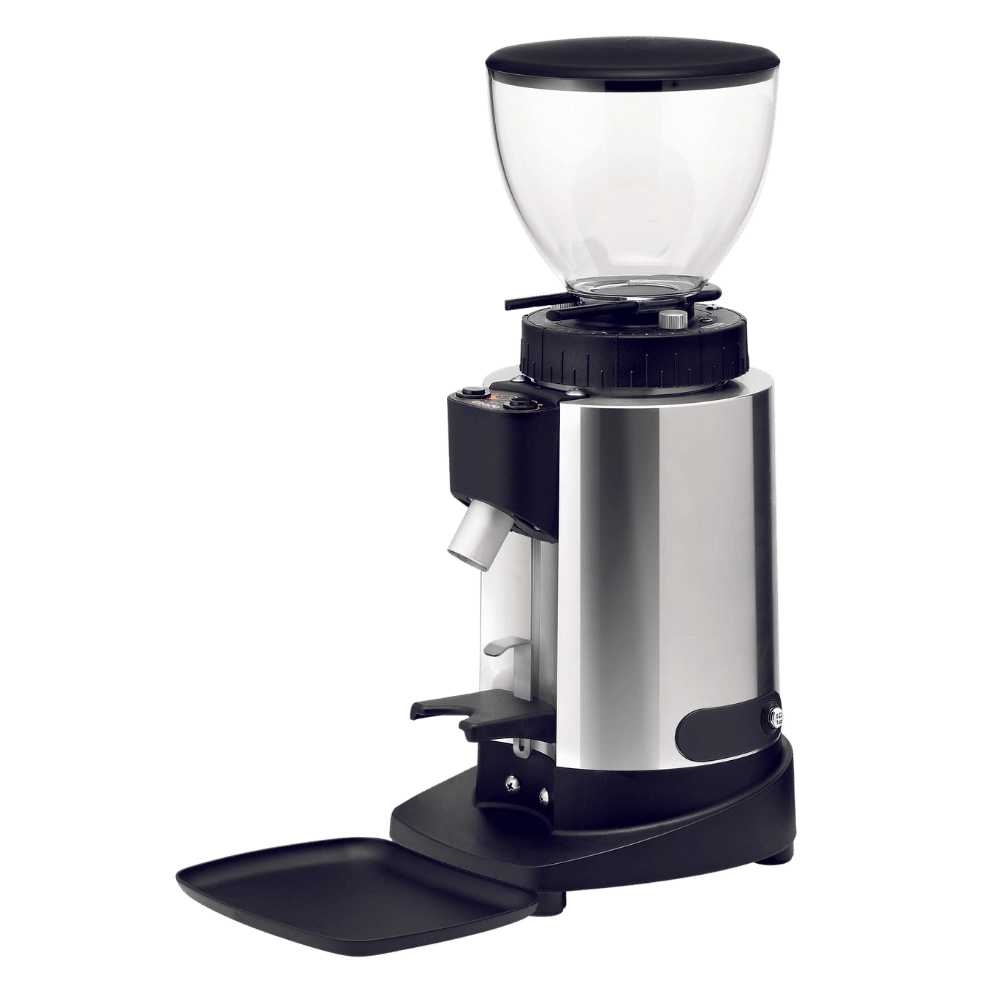
CEADO E6P
| GH1 | E6P | |
| Price | $950 | $920 |
| Burr Shape | Flat | Flat |
| Material (Burr) | Steel | Steel |
| Diameter (Burr) | 85 mm | 64 mm |
| Hopper Capacity | 4.4 lbs | 1.3 lbs |
| Watts | 750 W | 300 W |
| RPM for Burrs | 1350 RPM (50 Hz) 1600 RPM (60 Hz) | 1380 (50 Hz) 1650 (60 Hz) |
| Net Weight | 57 lbs | 19 lbs |
| Dimensions (D × W × H) | 17 × 7 × 26 in | 7 × 9 × 18 in |
The Mahlkönig GH1 works better for home and business users who want to use multiple brewing methods. The CEADO E6P works better for homes with smaller kitchens that don’t want to pay extra for prosumer(ish) features.
The GH1 is a discontinued Mahlkönig model, but it’s a great option if you can find a second-hand one. Why choose it over the GH2, though? Both models are the same, but the GH1 has thinner, less durable burrs.
And the GH2 is actually available for purchase.
The GH1 isn’t an optimal grinder for most households since it weighs a lot and is high. Making it a pain to carry around a kitchen and store. However, part of its large size is due to having larger burrs.
The bigger burrs will last much longer than the ones on the E6P. They’ll also grind quicker—I’d hope so since they’re on a “commercial” grinder.
Considering this machine’s price tag, it’s still fantastic for home use.
The GH1 can run at a lower RPM than its rival, making it better for coarse brewing methods like filter coffee and cold brew. The E6P can run at higher RPMs, making it better for finer coffee brewing methods like espresso and Turkish coffee.
Why are higher RPMs better for finer grounds?
Because higher RPMs on grinders create finer particles. There’s nothing else to it.
Which One’s Better?
The CEADO E6P works better overall since it can run at low and high RPMs. Making it suitable for multiple brewing methods. It’s also much easier to find than the GH1 since it’s not discontinued.
Commercial/High Volume Mahlkönig vs. CEADO Grinders
Always opt for Mahlkönig if you’re looking for industrial coffee grinders. They offer the DK27 LVH, which works much better for coffee roasters and wholesalers than other commercial models. CEADO doesn’t offer such grinders.
If you want a machine with a doser, then CEADO is the victor. Mahlkönig only offers on-demand models. However, most modern grinders use electronic dosing, which eliminates the need for dosers.
Are you now conflicted on which grinder type to choose? Read our guide on doserless versus doser grinders.
Otherwise, if you’re still reading this section, I’ll compare the following machines throughout the following sections:
- Mahlkönig Guatemala 2.0: Best for multiple brewing methods
- CEADO E7: Most affordable
- Mahlkönig E65S: Most durable
- CEADO E37S: Potentially grinds the quickest
- Mahlkönig GH2: Affordable and great for multiple brewing methods
- CEADO E37Z: Great for espresso
I’ll explain what types of businesses will benefit from each machine. From there, I’ll compare all machines based on design choices and features. I’ll afterward suggest which machine’s better.
Let’s dive in.
1. Mahlkönig Guatemala 2.0 vs. CEADO E7
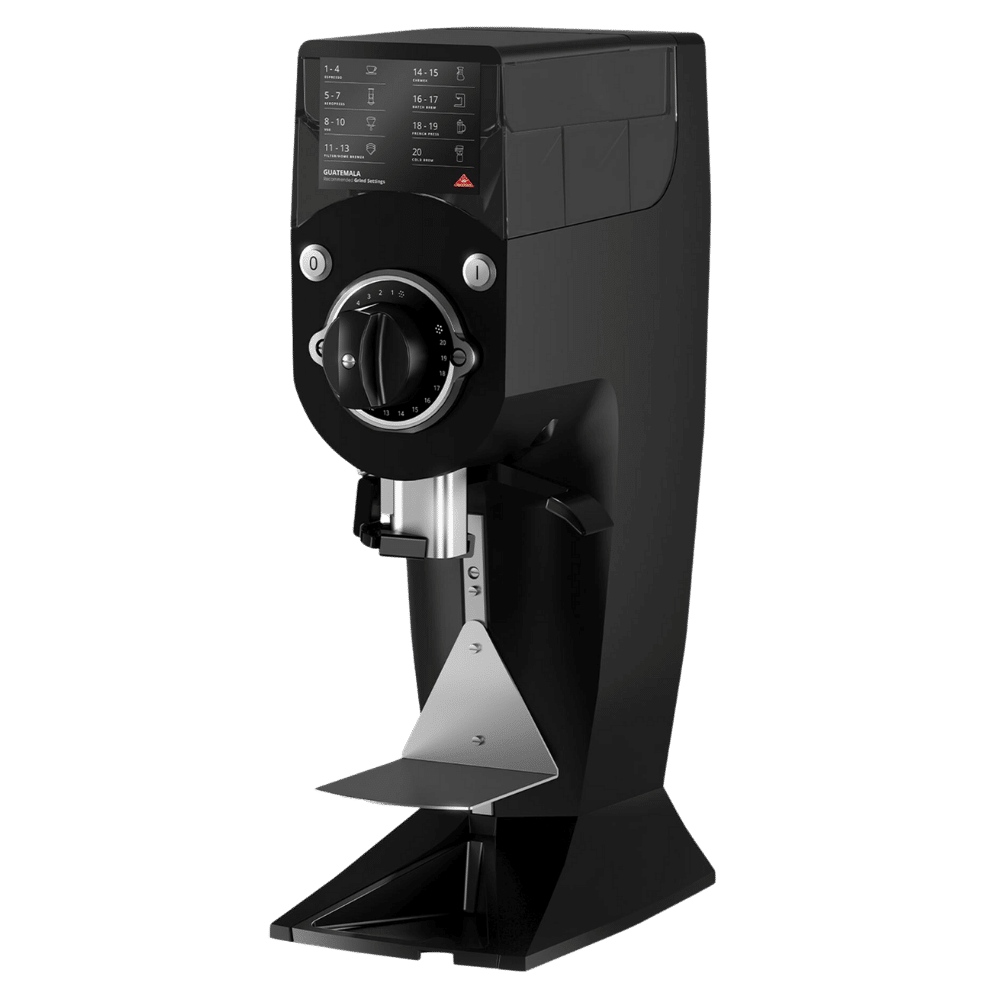
Mahlkönig Guatemala 2.0
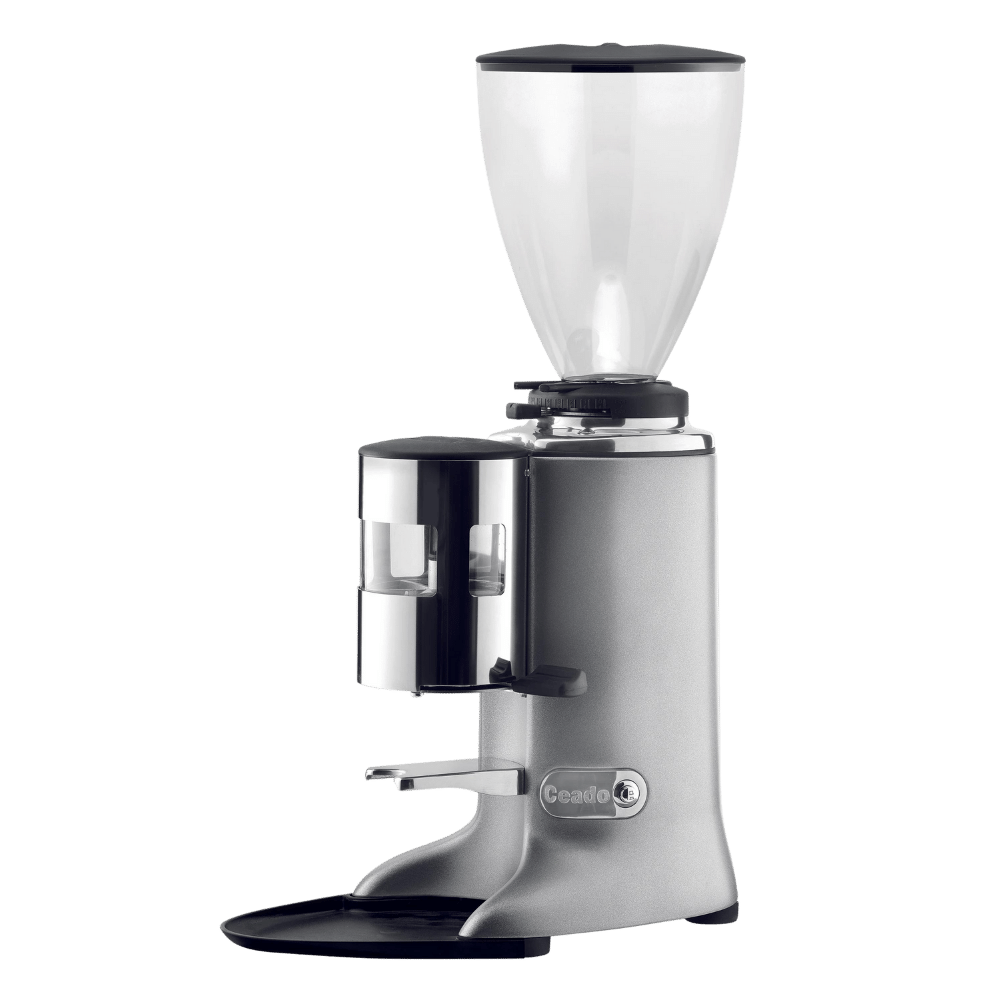
CEADO E7
| Guatemala 2.0 | E7 | |
| Price | $2,000 | $1,022 |
| Burr Shape | Conical | Flat |
| Material (Burr) | Steel | Steel |
| Diameter (Burr) | 71 mm | 64 mm |
| Hopper Capacity | 1.1 lbs | 3.5 lbs |
| Watts | 1100 W | 400 W |
| RPM for Burrs | 3500 RPM | 1400 RPM |
| Net Weight | 66 lbs | 29 lbs |
| Dimensions (D × W × H) | 13 × 8.7 × 24.4 in | 9 × 12 × 25 in |
The Mahlkönig Guatemala 2.0 works better for coffee shops that serve various drinks (e.g., Turkish coffee and nel drip). The CEADO E7 works better for high-traffic environments that primarily focus on espresso-based drinks.
The E7 is superior for speed due to its doser chamber. This allows you to pre-grind beans at various consistencies. Upon filling up your doser, the machine can rapidly dispense the coffee grounds.
If you’re not continually spitting out coffee grounds, or don’t have crazy lunch and breakfast rushes, then you may want to consider the next pair of grinders I’ll compare.
The Guatemala 2.0 doesn’t work well for espresso because conical burrs don’t do the best job at extracting flavors from your beans. Flat burrs do. However, conical burrs are more forgiving for grind size variations, making it optimal for other brewing methods.
It also doesn’t have a portafilter holder, which makes it inconvenient for grinding espresso beans.
Here are all the brewing method the Guatemala 2.0 supports based on its grind settings:
- Espresso
- AeroPress
- Manual pour-over (“V60”)
- Drip coffee
- Chemex
- French press
- Cold brew
Because both grinders serve different purposes, there’s no reason to compare the burr diameter. The Guatemala 2.0 will weigh a lot more, though. Making it a not-so-awesome option for coffee carts.
As you’ll need to load and unload this thing whenever you set up your cart.
Which One’s Better?
The CEADO E7 is a superior grinder for espresso due to using flat burrs. But the Guatemala 2.0 works better for other brewing methods like cold brew and drip coffee.
2. Mahlkönig E65S vs. CEADO E37S
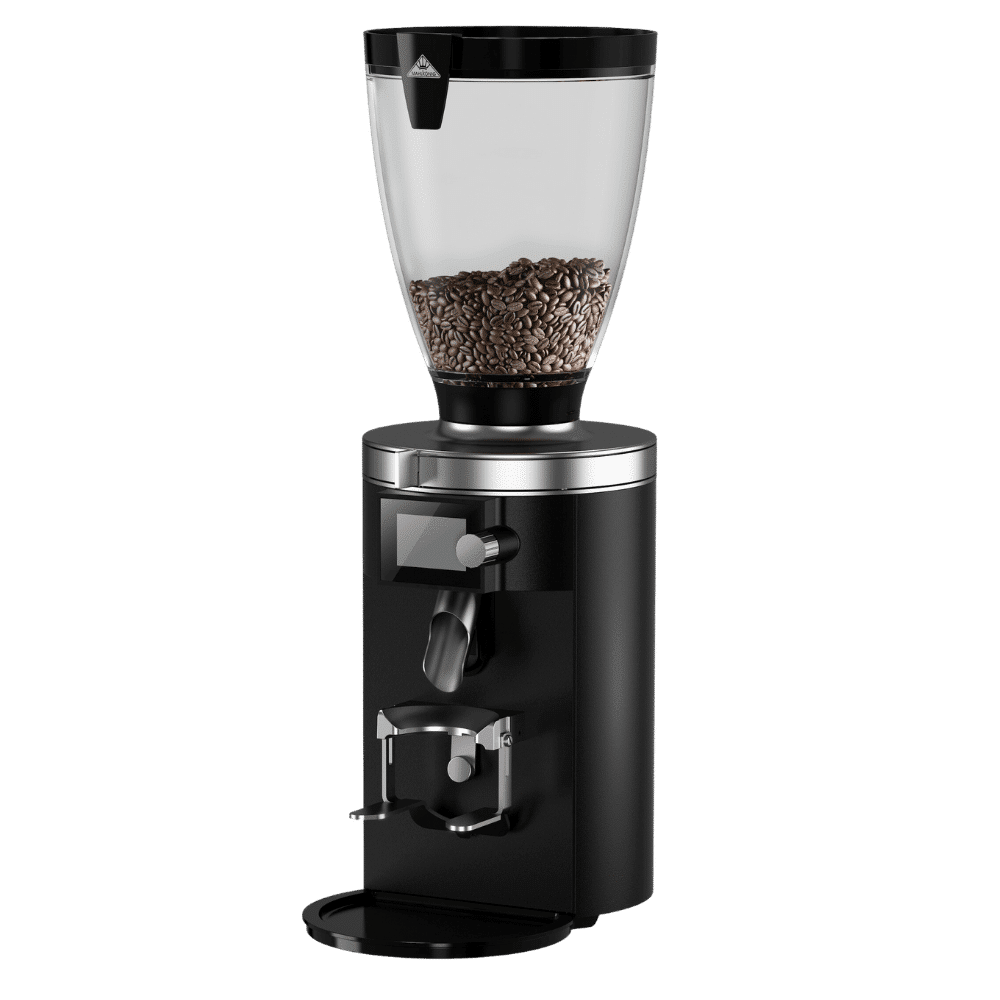
Mahlkönig E65S
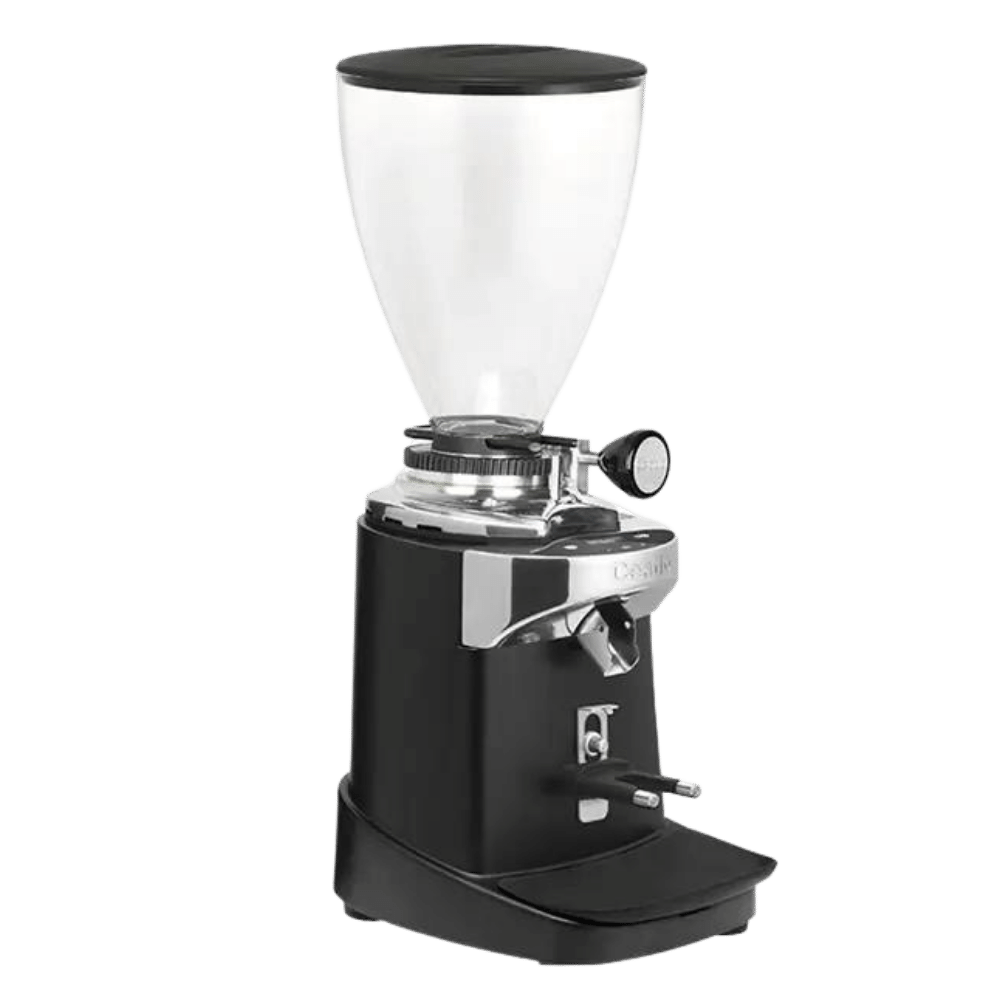
CEADO E37S
| E65S | E37S | |
| Price | $2,300 | $1,785 |
| Burr Shape | Flat | Flat |
| Material (Burr) | Special steel | Steel |
| Diameter (Burr) | 65 mm | 83 mm |
| Hopper Capacity | 2.6 lbs | 3.5 lbs |
| Watts | 580 W | 500 W |
| RPM for Burrs | 1700 RPM | 1480 RPM (50 Hz) 1700 RPM (60 Hz) |
| Net Weight | 24.7 lbs | 26 lbs |
| Dimensions (D × W × H) | 7.68 × 22.95 × 11.14 in | 9 × 12 × 22 in |
The CEADO E37S works better for high-volume cafés and coffee shops that want to quickly grind beans more consistently. The E65S is more ideal for shops that want a robust machine and doesn’t mind sacrificing a bit of speed.
The speed differences come from the burr size. The larger the burr, the quicker your machine will grind. Bigger burrs also tend to have more consistent grind sizes due to having an increased cutting area. And they’ll have potentially less heat generation.
But there’s a reason why the E65S costs more. Because of the special steel burrs. These hardened steel burrs do a much better job at grind consistency than their flimsy counterpart on the E37S.
That’s because they’re sharper. And since they’re hardened, they won’t need replacements as often. Making it more ideal for shops seeking longevity in their grinders.
CEADO’s grinder has a much bigger hopper than Mahlkönig’s, which will prevent your team from needing to refill it as regularly. However, the E65S has 6 programmable grind settings, which will also save you time.
So long as you have multiple grind methods for your shop. Otherwise, the E37S will help more with speed.
Otherwise, both grinders are similar in most other areas.
Which One’s Better?
The CEADO E37S is more affordable and accessible. Making it better for most coffee shops, stands, and carts. However, the E65S may save you money in the long run since it has more durable burrs.
3. Mahlkönig GH2 vs. CEADO E37Z
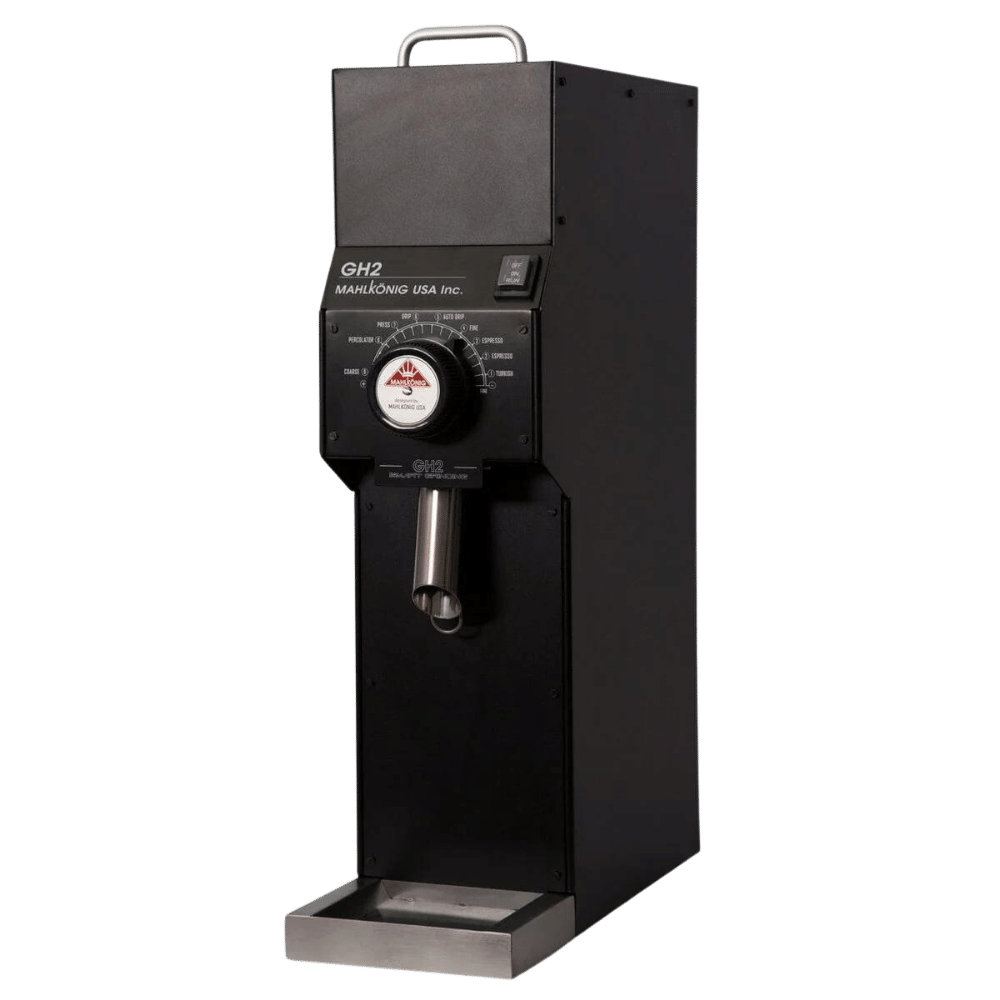
Mahlkönig GH2
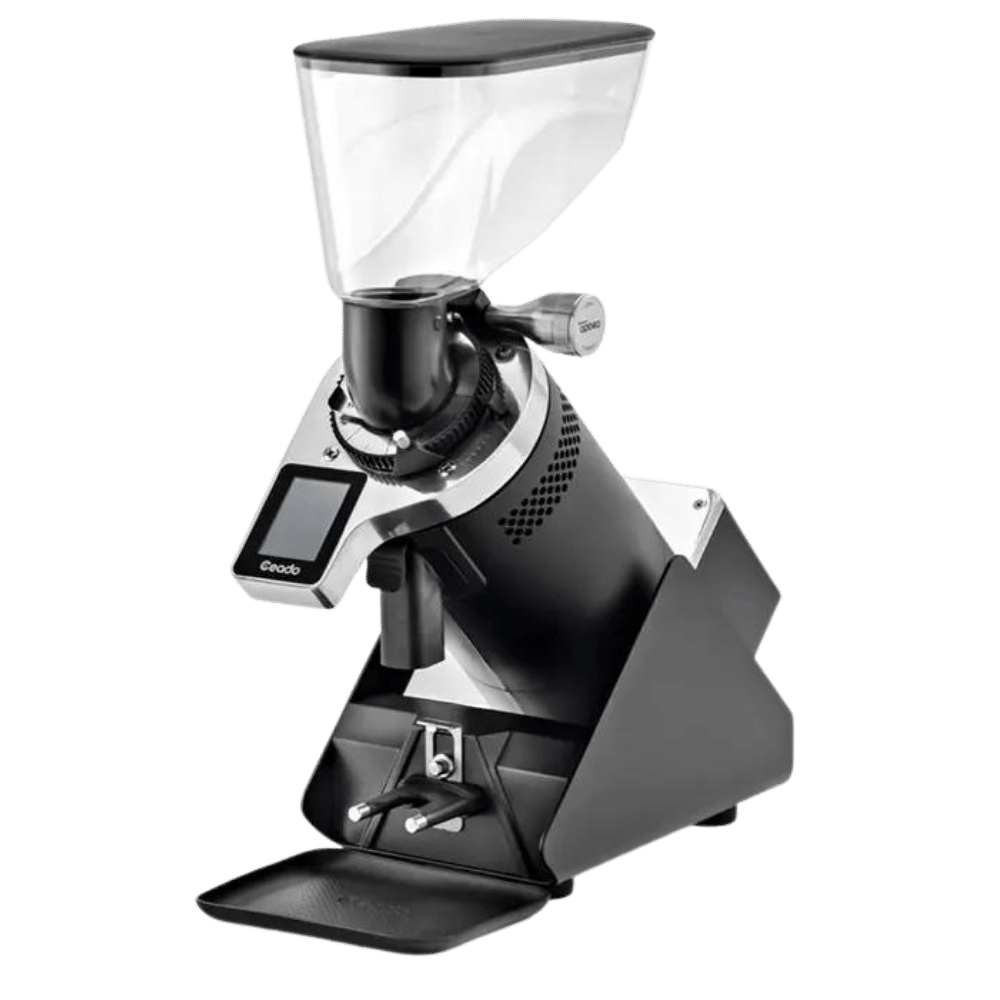
CEADO E37Z
| GH2 | E37Z | |
| Price | $1,100 | $3,850 |
| Burr Shape | Flat | Flat |
| Material (Burr) | Steel | Steel |
| Diameter (Burr) | 85 mm | 83 mm |
| Hopper Capacity | 4.4 lbs | 2.6 lbs |
| Watts | 750 W | 900 W |
| RPM for Burrs | 1400 RPM (50 Hz) 1600 RPM (60 Hz) | 1700 RPM (60 Hz) |
| Net Weight | 57 lbs | 41.5 lbs |
| Dimensions (D × W × H) | 17 × 7 × 26 in | 7.9 × 16.5 × 21.7 in |
The Mahlkönig GH2 works best for homes that want a robust coffee grinder suitable for many brewing methods. The E37Z works better for coffee shops that focus on espresso. Honestly, neither coffee grinder is for home use.
Yeah, both machines have huge price differences. However, they’re excellent options for coffee shops to consider. Whether you’re on a budget or have extra money to blow.
They’re ideal for medium-to-high-traffic cafés and coffee shops.
CEADO and Mahlkönig don’t offer that many prosumer models. They’re for basic home users, or for commercial purposes.
The GH2 uses fewer revolutions per minute (RPM). Making it ideal for grinding coarser grounds, since the machine runs slower. For instance, you could select the “percolator” or “auto drip” settings to accommodate those brewing methods.
Or you could switch up the RPM to work better with espresso (fine grounds) or Turkish (finest grounds). The E37Z will work better for finer grounds, though. Since it uses more RPM.
Both grinders have massive burrs, which, again, makes them better for commercial use. But coffee hobbyists will love it because the larger surface area of these burrs typically results in better-tasting coffee.
If you want to mimic the taste of a café, both machines are fantastic.
Which One’s Better?
The Mahlkönig GH2 works better for coffee shop owners or enthusiasts wanting to use multiple brewing methods at home. The E37Z works better for the same people, except with specifically espresso.
Each Company’s History
The following sections will cover Mahlkönig’s and CEADO’s history. If you’re someone who wants to buy from a brand with a lot of knowledge about their products, these sections may prove helpful.
Let’s dive in.
1. Mahlkönig History
Born in 1924, Mahlkönig started its journey in Hamburg, Germany, crafting electric motors. By the 1950s, they shifted gears, leveraging their motor expertise to become a leading coffee grinder manufacturer.
Today, Mahlkönig offers a diverse range of grinders for home, prosumer, and commercial use, solidifying their position as coffee grinding masters.
And here’s a refresher on CEADO’s history.
2. CEADO History
A person by the name of Egidio Girardi, who was learning how to make coffee grinders in Venice, Italy, founded CEADO in 1952 [2]. From there, his company began to hand-make coffee grinders and fruit juicers.
At some point, Egidioi passed off control of the company to his oldest son, Michele. I scoured the internet and couldn’t find any more information. I also couldn’t find additional history or achievements for CEADO.
That’s all for this post.
Conclusion
CEADO typically offers cheaper machines for home and business use. But they aren’t as robust as Mahlkönig ones, since the German brand usually uses higher-quality burrs.
I didn’t cover every grinder from both brands. If you want to look into what else they offer, check out our selection of Mahlkönig and CEADO grinders. Compare them and see which will work best for your needs.

